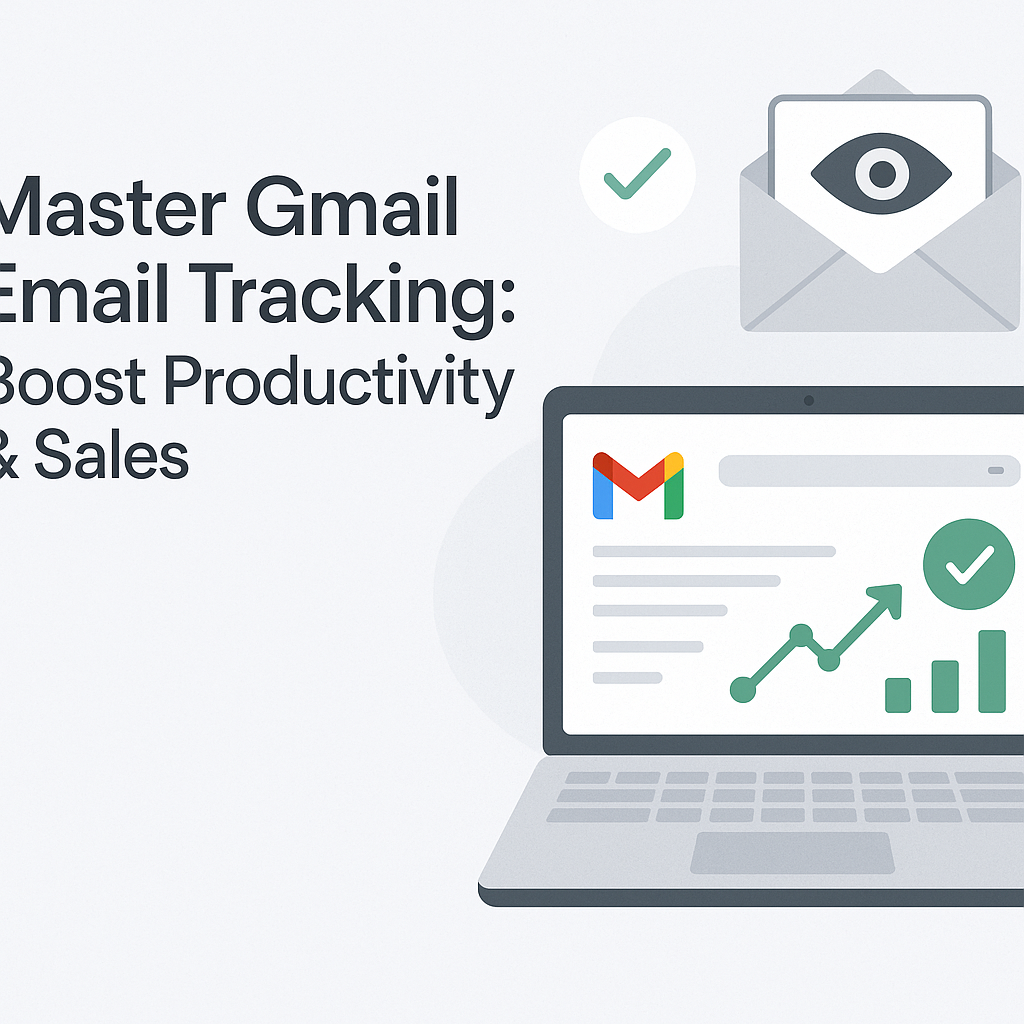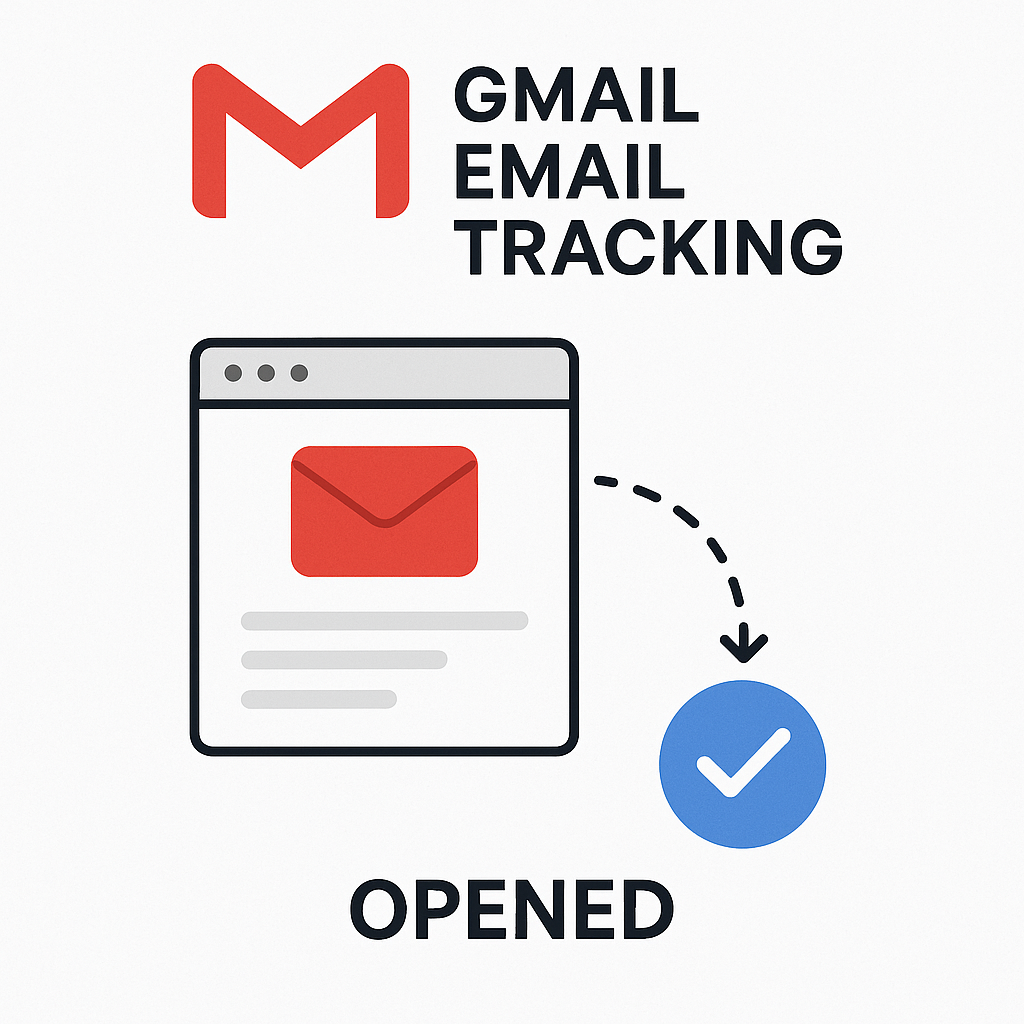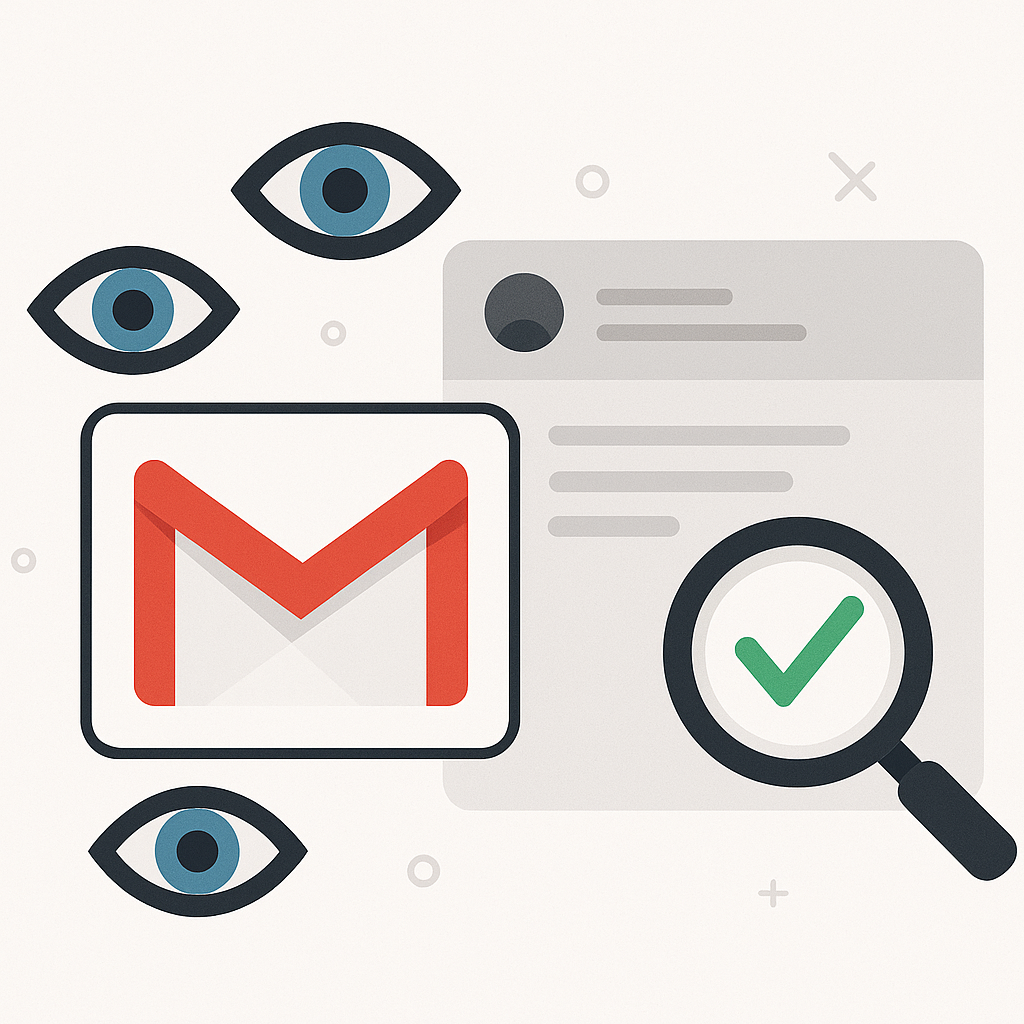Master Gmail Email Tracking: Boost Productivity & Sales
In today's fast-paced digital world, email remains the cornerstone of professional communication. From sealing sales deals to coordinating projects and nurturing client relationships, our inboxes are bustling hubs of activity. But how often do you send an email and then wonder if it was even opened? Was your crucial proposal actually read? Did the recipient click on that important link? This uncertainty can be a major roadblock to productivity and sales effectiveness. This is where Gmail email tracking steps in, transforming guesswork into informed action.
Gone are the days of sending emails into a void. By leveraging the power of email tracking, you gain invaluable insights into how your messages are received and interacted with. This article will delve into the critical role of Gmail email tracking for business professionals aiming to maximize their email productivity and outreach effectiveness. We'll explore everything from basic functionalities to advanced AI-powered insights, showing you how to refine your communication tactics and achieve superior business outcomes.
What is Gmail Email Tracking & How It Works (The Basics)
At its core, Gmail email tracking is a technology that allows senders to monitor the engagement of their sent emails. While Gmail itself offers a basic "read receipt" feature for Google Workspace users (which requires the recipient to manually approve sending a receipt), third-party tools and browser extensions provide a much more robust and automated solution for comprehensive tracking.
These tools typically employ a few key mechanisms:
- Email Open Tracking: This is achieved by embedding a tiny, invisible 1x1 pixel image (often called a "tracking pixel") into the body of your email. When the recipient opens the email and their email client loads images, this pixel is loaded from the tracking service's server. This action registers an "open" event, notifying you that your email has been viewed.
- Email Link Tracking: When you include links in your email, tracking tools often rewrite these links to pass through their own servers first. When a recipient clicks on a link, they are briefly redirected through the tracking server before landing on the intended destination. This allows the tool to record the click event, providing data on which links were engaged with.
- Email Read Receipts (Enhanced): Beyond the basic Gmail feature, many tracking tools offer more sophisticated "read receipts" by combining open and click data, giving a more confident indication of engagement without relying on manual recipient approval. As noted by MailTracker, "Tracking your email opens gives you more control over your inbox. Instead of guessing, you can use real data to make smarter decisions, improve customer interactions, and get better results from all your email communications."
These basic functionalities provide a foundational layer of email performance analytics, offering a window into your recipient's immediate interaction with your messages.
Key Benefits of Tracking Your Gmail Communications
Implementing gmail email tracking can profoundly impact your communication strategy, leading to tangible improvements in various aspects of your professional life. It's not just about knowing if an email was opened; it's about leveraging that knowledge for strategic advantage.
- Improved Follow-Up Strategies: One of the most immediate benefits is the ability to craft more effective follow-up emails. Knowing if an email was opened (or ignored) allows you to tailor your next communication. If it was opened multiple times but no reply, perhaps the content wasn't clear, or a gentle nudge is needed. If it wasn't opened at all, you might consider resending with a new subject line or trying a different communication channel. This strategic approach to follow-ups is crucial, especially for sales. Learn more about optimizing your outreach in our guide on Mastering the Followup Sales Email for More Conversions.
- Enhanced Sales and Marketing Campaigns: For sales professionals, sales email metrics are gold. Tracking allows you to identify hot leads (those repeatedly opening emails or clicking links) and prioritize your outreach. Marketing teams can gauge the effectiveness of their campaigns by seeing which emails resonate most with their audience, leading to higher conversion rates. According to BigContacts, integrating CRM with Gmail, often powered by robust email tracking, can "transform your emails into a sales machine."
- Better Content Optimization: By analyzing email link tracking data, you can understand which calls to action or embedded resources are most engaging. If a particular link receives a high click-through rate, you know that content resonates. Conversely, if links are ignored, it's a clear signal to refine your content strategy. This data-driven approach ensures your emails are always improving.
- Boosted Productivity and Inbox Management: Imagine knowing which emails require immediate attention because they've been opened and which can wait. This insight helps streamline your workflow, enabling you to focus your energy where it matters most. It's a powerful component of effective inbox management tips, helping you cut through the noise and achieve peak efficiency.
- Understanding Engagement Patterns: Over time, tracking data reveals patterns. Are your emails opened more at certain times of the day? Do specific subject lines lead to higher open rates? This understanding helps you optimize send times and subject lines for future communications, directly impacting your email productivity tools effectiveness.
Beyond Basic Tracking: Unlocking Deeper Insights with AI
While knowing if an email was opened or a link clicked is valuable, basic email open tracking and email link tracking only scratch the surface. They tell you *what* happened, but not *why* or *what's next*. This is where the true power of artificial intelligence (AI) in Gmail email tracking comes into play, transcending simple email read receipts to provide strategic advantages.
The limitations of simple tracking include:
- Lack of Context: An open doesn't mean comprehension or interest. A click doesn't guarantee conversion.
- Volume Over Insight: For high-volume senders, raw open/click data can be overwhelming without a way to interpret it.
- No Predictive Power: Basic tracking is reactive; it tells you what happened, not what's likely to happen.
Advanced AI platforms are designed to transform raw tracking data into actionable intelligence. They leverage sophisticated algorithms to offer:
- Predictive Analytics: AI can analyze historical interaction data (opens, clicks, replies, time spent) to predict the likelihood of a recipient engaging with future emails or even converting into a customer. This allows you to prioritize leads and tailor follow-ups with remarkable precision.
- Sentiment Analysis: Beyond just tracking opens, some AI tools can analyze the content of replies (if integrated) to gauge the sentiment of the recipient – are they positive, negative, or neutral? This gives you a qualitative understanding of engagement.
- Intelligent Automation: Based on tracking insights, AI can trigger automated workflows. For instance, if an email is opened multiple times within an hour, the AI could automatically add the recipient to a "hot lead" list or suggest a personalized follow-up. Conversely, if an email goes unopened for days, it might suggest re-engagement tactics.
- Content Optimization Recommendations: AI can analyze which elements of your email (subject lines, body text, calls-to-action) lead to the best engagement rates and provide data-driven recommendations for improvement, moving beyond simple A/B testing to truly intelligent optimization.
These advanced AI email insights go far beyond simple tracking, positioning your email strategy in the realm of "competitor intelligence" by enabling you to refine your communication tactics and stay ahead in the market. It's about moving from reactive email management to proactively strategic communication.
Practical Strategies for Leveraging Gmail Tracking Data
Collecting gmail email tracking data is only the first step; the real value lies in how you interpret and act upon it. Here are practical strategies to integrate tracking data into your daily workflows, enhancing your overall email productivity tools:
- Segment Your Audience Based on Engagement:
- Highly Engaged: Recipients who consistently open and click. These are your warmest leads or most attentive clients. Prioritize personalized follow-ups or special offers for them.
- Moderately Engaged: Open some emails but rarely click. They might be interested but not compelled. Experiment with different content types or calls to action.
- Low Engagement/Unopened: Rarely or never open. This segment needs re-engagement strategies, such as re-sending with a new subject line, trying a different time, or even removing them from certain lists to maintain list hygiene.
- Optimize Send Times and Days: Analyze your email performance analytics to identify peak open and click times. Do your recipients open emails more during working hours, or in the evening? Weekdays or weekends? Adjust your send schedule accordingly. For general Gmail productivity, Udemy's "Master Gmail Like a Pro" course emphasizes smart inbox organization, which includes understanding when and how to best utilize your email time.
- A/B Test Everything: Use tracking data to inform your A/B testing. Test different subject lines to see which drives higher open rates. Test different body copy, images, or call-to-action buttons to see which generates more clicks. This iterative process is key to continuous improvement.
- Refine Your Subject Lines: The subject line is often the gatekeeper to an open. If your open rates are low, experiment with different types:
- Question-based subject lines
- Benefit-driven subject lines
- Urgency or scarcity-based subject lines
- Personalized subject lines
- Improve Content and Calls-to-Action: If you have high open rates but low click rates, your content might be engaging enough to get someone to open, but not compelling enough to drive action. Use email link tracking to pinpoint underperforming links and rewrite the surrounding content to make the call-to-action clearer and more enticing.
- Prioritize Sales Follow-Ups: For sales teams, knowing who opened your proposal multiple times is invaluable. This indicates high interest. Reach out to them promptly while they're engaged. Conversely, if a prospect hasn't opened your email, a phone call might be a better next step than another email. Our article on Mastering Email Analytics: From Data to Actionable Insights provides further guidance on transforming raw data into actionable strategies.
- Integrate with Your CRM: Many advanced email productivity tools integrate seamlessly with CRM systems. This allows you to log email interactions directly against contact records, providing a holistic view of every lead or client's journey. This integration is crucial for maintaining comprehensive customer interaction histories.
Ethical Considerations and Best Practices for Email Tracking
While gmail email tracking offers immense benefits, it's crucial to approach it with ethical considerations and best practices in mind. Privacy concerns are paramount, and respecting your recipients is key to maintaining trust and reputation.
- Transparency is Key: While tracking pixels are invisible, consider adding a brief disclosure in your email footer that you use tracking technologies to improve communication. This is especially important for marketing emails. Transparency builds trust.
- Comply with Regulations (GDPR, CCPA, etc.): Be aware of and comply with data privacy regulations relevant to your audience. For instance, GDPR (General Data Protection Regulation) in Europe and CCPA (California Consumer Privacy Act) require specific consent for data collection and provide individuals with rights regarding their data. While tracking pixels themselves might not always fall under strict consent requirements for operational purposes, it's wise to err on the side of caution and ensure your overall data practices are compliant.
- Focus on Value, Not Surveillance: The purpose of tracking should be to provide a better, more relevant experience for your recipient, not to spy on them. Use insights to tailor content, improve follow-ups, and offer timely assistance, rather than to monitor their every move.
- Provide Opt-Out Options: For marketing or mass emails, always provide a clear and easy way for recipients to unsubscribe or opt-out of future communications. This is not only a legal requirement in many regions but also a sign of respect.
- Avoid Over-Tracking: Don't track every single email if it's not necessary. For highly personal or internal communications, tracking might be perceived as intrusive. Reserve comprehensive tracking for outreach where performance metrics are genuinely critical, such as sales, marketing, or important project updates.
- Data Security: Ensure that any third-party email productivity tools you use for tracking have robust data security measures in place to protect your and your recipients' information.
- Educate Your Team: If multiple people in your organization use email tracking, ensure everyone understands the ethical guidelines and best practices. Consistency in approach fosters a professional image.
By adhering to these ethical guidelines, you can harness the power of gmail email tracking responsibly, building stronger relationships with your audience while achieving your business objectives.
Boost Your Productivity: How MailToPie Elevates Your Email Tracking
In the quest for ultimate email mastery, moving beyond basic tracking to intelligent, AI-driven solutions is the next logical step. While many tools offer rudimentary email open tracking and email link tracking, platforms like MailToPie are designed to elevate your entire email management strategy, making it not just productive but truly strategic.
MailToPie isn't just another tracking tool; it's an intelligent platform that transforms raw email data into actionable intelligence. Here’s how it takes your Gmail email tracking to the next level:
- Comprehensive Email Performance Analytics: MailToPie goes beyond simple opens and clicks, providing a holistic view of your email engagement. It correlates various metrics to give you a deeper understanding of your audience's behavior, allowing for more nuanced email performance analytics.
- AI-Powered Insights and Recommendations: Leveraging cutting-edge artificial intelligence, MailToPie provides advanced AI email insights. It can analyze patterns, predict recipient behavior, and even suggest optimal send times or content adjustments to maximize your engagement rates. This predictive capability helps you make proactive decisions, rather than just reacting to data.
- Sentiment Analysis for Deeper Understanding: Imagine knowing not just if an email was opened, but also the general sentiment of the reply. MailToPie’s AI can analyze incoming email content to gauge sentiment, giving you a qualitative layer of insight crucial for sales and customer service interactions.
- Intelligent Automation Based on Engagement: MailToPie can automate follow-ups or categorize leads based on their engagement levels. For example, if a recipient opens your email multiple times and clicks on a specific link, MailToPie can automatically tag them as a "hot lead" or trigger a personalized follow-up sequence, saving you precious time and ensuring no opportunity is missed. This automation is a game-changer for email productivity tools.
- Seamless Integration with Your Workflow: Designed to fit effortlessly into your existing Gmail workflow, MailToPie ensures that gaining these advanced insights doesn't add complexity but simplifies your daily tasks. It functions as a powerful ai executive assistant, streamlining your workflow and allowing you to focus on high-value tasks.
- Strategic Advantage through Competitor Intelligence: By understanding what truly resonates with your audience and leveraging predictive insights, MailToPie empowers you to refine your communication tactics, stay ahead of market trends, and outperform competitors who rely on guesswork.
In essence, MailToPie transforms your email management from a reactive chore into a proactively strategic function. It enables entrepreneurs, sales professionals, and executives to not only track but truly understand their email interactions, leading to superior efficiency and tangible business outcomes.
Conclusion: Master Your Inbox with Smarter Email Tracking
In the digital age, your email inbox is far more than just a communication channel; it's a powerful tool for driving productivity, fostering relationships, and closing deals. Relying on guesswork for your email outreach is no longer viable. Embracing Gmail email tracking, from basic open and click metrics to advanced AI email insights, empowers you to take control of your communications.
By understanding if and how your emails are being engaged with, you unlock the ability to:
- Craft more effective follow-up strategies.
- Optimize your sales and marketing campaigns for higher conversions.
- Refine your content based on real-world engagement data.
- Boost your overall email productivity tools and efficiency.
Remember to always balance the power of tracking with ethical considerations, ensuring transparency and respecting recipient privacy. When used responsibly, email tracking becomes an indispensable asset.
To truly master your inbox and transform your email strategy from reactive to proactively intelligent, consider leveraging advanced platforms like MailToPie. By providing comprehensive email performance analytics, predictive insights, and intelligent automation, MailToPie empowers you to achieve superior efficiency and tangible business outcomes. Stop guessing and start knowing. Elevate your email game today and experience the profound impact of smarter inbox management tips.



